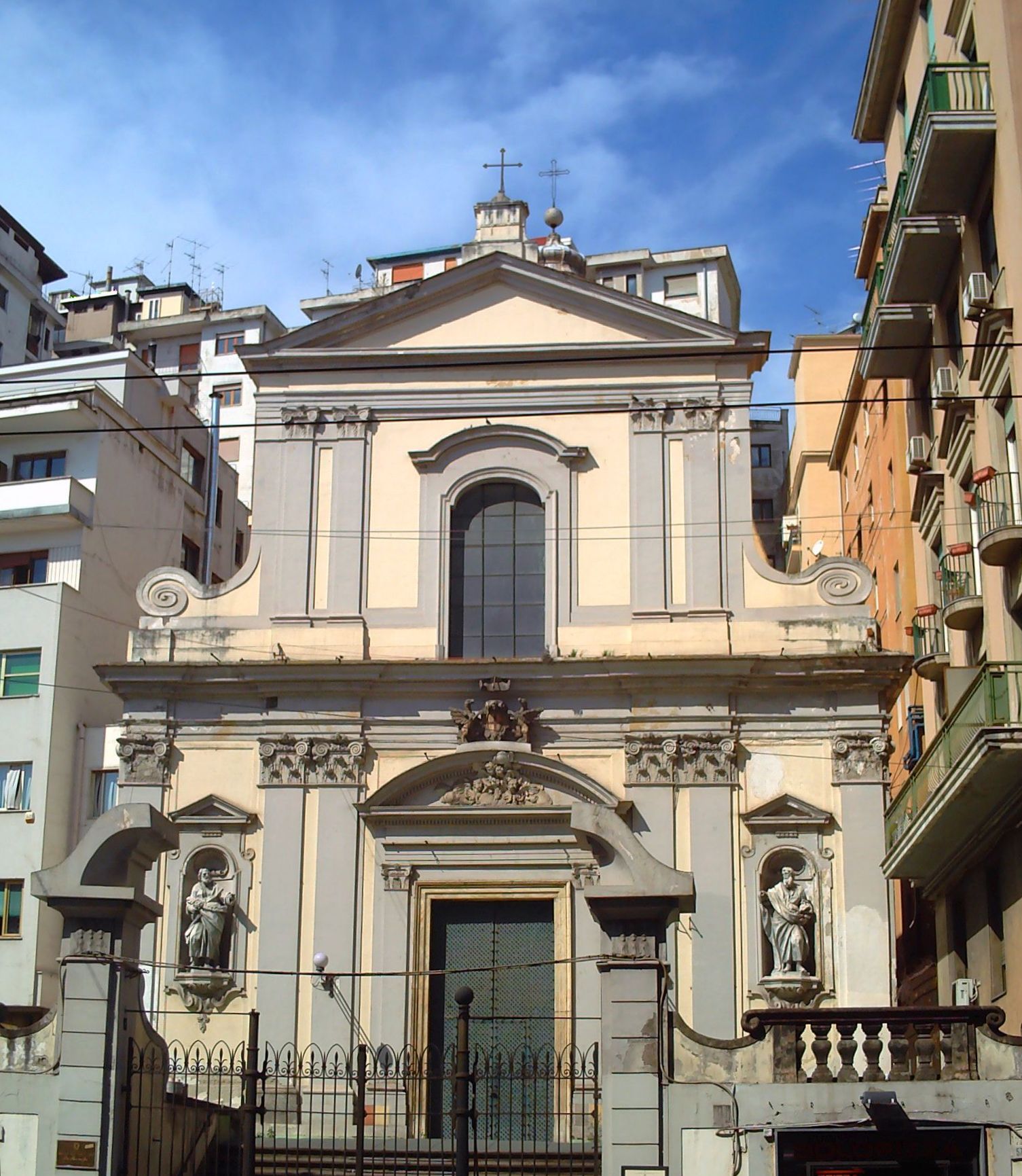Bartolomeo Picchiati on:
[Wikipedia]
[Google]
[Amazon]
 Bartolomeo Picchiatti (Ferrara, 1571 – Naples, 3 April 1643) was an Italian engineer and architect. A short street in the
Bartolomeo Picchiatti (Ferrara, 1571 – Naples, 3 April 1643) was an Italian engineer and architect. A short street in the
Soccavo
250px, Urban sprawl in Soccavo.
Soccavo is a western quarter of Naples, with a population of about 45,000.
Geography
Soccavo (Italian: "beneath the quarry") is bounded on one side by the area of Fuorigrotta and on the other by the Camaldoli hill ...
area of the city is named after him.
Life
He moved to Naples in 1593, having been summoned by the architectDomenico Fontana
Domenico Fontana (154328 June 1607) was an Italian architect of the late Renaissance, born in today's Ticino. He worked primarily in Italy, at Rome and Naples.
Biography
He was born at Melide, a village on the Lake Lugano, at that time joint p ...
to be his assistant. He assisted Domenico and Giulio Cesare Fontana in the completion of works left incomplete by Giulio on his departure for Spain. He took charge of the excavating the Regi Lagni
The Regi Lagni are a set of rectilinear and mostly man-made channels covering 1.095 km2 in 99 towns in the Province of Caserta, Province of Avellino, Province of Benevento and the Metropolitan City of Naples. They were built as part of canali ...
, planned by Fontana but only begun in the 17th century, before in 1634 the engineer Tommaso Alappio (? – ?, 23 August 1646) took over overall control whilst Picchiatti continued to direct the building site. In 1654 the Congregazione dei Nobili put Picchiatti in charge of designing and building the Palazzo Monte dei Poveri Vergognosi. Three years later he had a son, Francesco Antonio Picchiatti
Francesco Antonio Picchiatti (10 January 1619, Ferrara – 28 August 1694, Naples) was an Italian architect of the Baroque period active in Naples. He is also called Picchetto. He was son of Bartolommeo Picchiatti, who also served as an architec ...
, who also became an architect and assisted his father in the last years of his life.
In 1620 Bartolomeo completed San Giorgio dei Genovesi and in 1621 designed the gateway to Palazzo di Sangro
Palazzo di Sangro, also known as either Palazzo de Sangro di Sansevero or Palazzo Sansevero, is a late-Renaissance-style aristocratic palace facing the church of San Domenico Maggiore, separated by the via named after the church, in the city center ...
(constructed by Giuliano Finelli
Giuliano Finelli (1601–1653) was an Italian Baroque sculptor who emerged from the workshop of Bernini.
He was born in Carrara to a family of marble masons in a town associated with mining of the stone, and he initially trained with Michelange ...
) and the small Santuario della Madonna dell'Arco. 1621 also saw him inherit the building site for San Carlo alle Mortelle - he also went on to design its college and thus became a trusted architect for the Barnabites
, image = Barnabites.svg
, image_size = 150px
, caption = One version of the Barnabite logo. "P.A." refers to Paul the Apostle and the three hills symbolize the vows of poverty, chastity and obedience.
, a ...
. Following Giulio Cesare Fontana's death in 1627 he also took over as official engineer to the royal court, a post his son also later assumed. In 1632 he and Cosimo Fanzago
Cosimo Fanzago (Clusone, 12 October 1591 – Napoli, 13 February 1678) was an Italian architect and sculptor, generally considered the greatest such artist of the Baroque period in Naples, Italy.
Facade Santa Maria della Sapienza.
Biography
Fanz ...
rebuilt Pozzuoli Cathedral
Pozzuoli Cathedral or the Basilica of San Procolo martire is the main Roman Catholic church in Pozzuoli and the seat of the Diocese of Pozzuoli. It sits at the top of the Rione Terra and is built around an ancient Roman temple.
History Origins
...
in Rione Terra. In 1638 he worked on the church of Santi Apostoli, designing its elegant two-colour bell-tower. That year he also worked on the building of Santa Maria della Stella
Santa Maria della Stella is a church located on Via Stella 25 in the quartiere of its name in Naples, Italy.
History
The church was built in 1571, to host an icon of the Virgin, previously held in an aedicule near Porta San Gennaro. The Minims r ...
.
In 1641 he and his son jointly designed the Basilica of Sant'Agostino alla Zecca. He also restored Santa Maria Donnalbina at an unknown date. He died in 1643 and all his outstanding projects were assigned to Onofrio Antonio Gisolfi, who until 1656 took over the role of royal engineer.
References
Bibliography (in Italian)
* Francesco Domenico Moccia e Dante Caporali, ''NapoliGuida-Tra Luoghi e Monumenti della città storica'', Clean, 2001 *Aurelio De Rose, ''I Palazzi di Napoli. Storia, curiosità e aneddoti che si tramadano da secoli su questi straordinari testimoni della vita partenopea'', Newton e Compton editori, Napoli, 2004. * ''Napoli e Dintorni'', TCI, 2007 {{DEFAULTSORT:Picchiatti, Bartolomeo Italian Baroque architects 16th-century Italian architects 17th-century Italian architects 16th-century Neapolitan people 17th-century Neapolitan people Architects from Ferrara 1571 births 1643 deaths